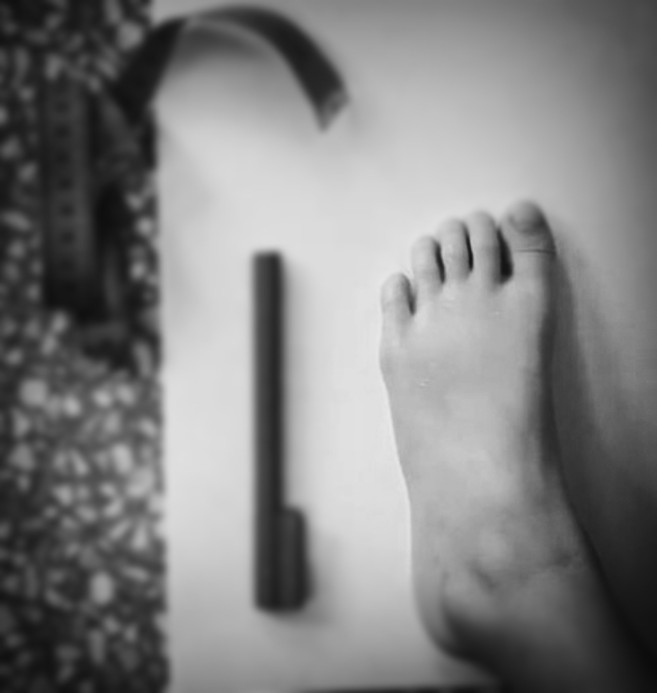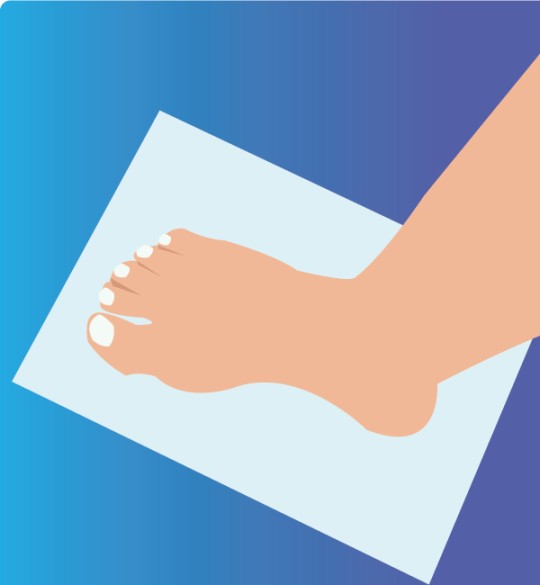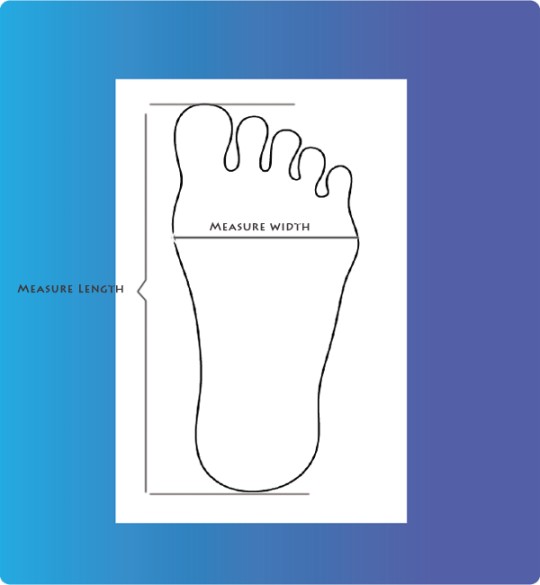When it comes to purchasing shoes, finding the right fit is crucial for both comfort and foot health.
One important factor that significantly impacts the fit of a shoe is its width.
Shoes are available in various widths, including narrow, medium, and wide, to accommodate different foot shapes and sizes.
Narrow shoes are specifically designed for individuals with slender or narrow feet.
On the other hand, wide shoes are intended for those with wider feet.
Medium-width shoes are the most common and are designed to fit the average foot.

Understanding the distinctions between narrow, medium, and wide-width shoes can help you make informed decisions when shopping for footwear.
By selecting the appropriate width, you can ensure that you find a comfortable and properly fitting pair of shoes.
In the past, I often encountered sizing issues whenever I bought new shoes, particularly dress shoes.
Strangely enough, I mistakenly believed that the shoes were a perfect fit for me.
It wasn’t until I noticed my toes feeling excessively squeezed together that I realized something was amiss.
This experience may be familiar to anyone who wears fitted shoes.
Following that incident, I conducted extensive research on shoe sizing and how to accurately measure foot width.
Experts assert that wearing shoes that are improperly fitted and too tight not only damages the shoes themselves but can also have negative implications for foot health.
In this article, I will break down the differences between narrow, medium, and wide-width shoes.
Additionally, I will provide recommendations on how to measure for the proper fit and suggest brands that cater to narrow, medium, and wide feet.
With this information, you can shop for shoes with confidence!
Understanding Shoe Widths: What You Should Know
To find the right shoes for you, it’s essential to familiarize yourself with shoe widths.
This is because a size 10 shoe in one brand may not be the same as a size 10 in another brand. Furthermore, shoe widths differ between genders.
To simplify matters, there are three main width categories for both men’s and women’s shoes:
Narrow, Regular (Medium), and Wide.
In the American foot sizing chart, you may come across letters such as AAA (3A), AA2 (A), A, B, C, D, M, E, EE (2E), and EEE (3E).
The letters 3A to C represent narrow widths, D is the standard width for men, and M is the standard width for women.
The letter E signifies wide width, EE (2E) indicates extra wide, and EEE (3E) denotes ultra-wide width.
What do shoe widths mean?
What Does a Narrow Shoe Mean?
Narrow-width shoes feature a slim toe box, making them ideal for individuals with slender feet or those who prefer a snug fit.
These shoes are also designed for people with high arches, providing the necessary arch support in a compact space.
Narrow-width shoes come in various styles, including flats, wedges, heels, and boots.
Narrow width shoes are typically labeled with the letter “N” or “AA” to indicate their narrow width classification.
How Wide is a Narrow Width?
The width of a shoe is directly proportional to its length. As the shoe size (length) increases, so does the width. Narrow width typically measures between 2.8 inches to 4.2 inches. For women’s narrow width (3A), the range is around 2.65 inches to 3.55 inches, while men’s narrow size (C) spans from 3.2 inches to 4.2 inches.
The Benefits of Narrow Width Shoes Include
– Enhanced stability: The snug fit of narrow-width shoes helps keep the foot in place, minimizing excessive movement and promoting stability while walking or running.
– Preventing slippage: With a narrower fit, these shoes reduce the chances of the foot slipping inside the shoe, providing a secure and comfortable feel.
– Reduced friction: Narrow-width shoes help minimize friction between the foot and the shoe, which can prevent blisters and discomfort.
Men’s Size Chart Narrow Width
| US Size | UK Size | Narrow(C) Inches | Extra Narrow (B) Inches | Ultra-Narrow (A) Inches |
| 6 | 5.5 | 3.30″ | 3.15″ | 2.95″ |
| 6.5 | 6 | 3.35″ | 3.20″ | 3.00″ |
| 7 | 6.5 | 3.40″ | 3.25″ | 3.05″ |
| 7.5 | 7 | 3.45″ | 3.30″ | 3.10″ |
| 8 | 7.5 | 3.50″ | 3.35″ | 3.15″ |
| 8.5 | 8 | 3.55″ | 3.40″ | 3.20″ |
| 9 | 8.5 | 3.60″ | 3.45″ | 3.25″ |
| 9.5 | 9 | 3.65″ | 3.50″ | 3.30″ |
| 10 | 9.5 | 3.80″ | 3.55″ | 3.35″ |
| 10.5 | 10 | 3.85″ | 3.60″ | 3.40″ |
| 11 | 10.5 | 3.90″ | 3.65″ | 3.45″ |
| 11.5 | 11 | 3.95″ | 3.80″ | 3.50″ |
| 12 | 11.5 | 4.00″ | 3.85″ | 3.55″ |
| 12.5 | 12 | 4.10″ | 3.90″ | 3.60″ |
| 13 | 12.5 | 4.15″ | 3.95″ | 3.65″ |
Women’s Size chart Narrow Width
| US Size | UK Size | Narrow(A) Inches | Extra Narrow (AA) Inches | Ultra-Narrow (AAA) Inches |
| 5 | 4.5 | 2.85″ | 2.70″ | 2.65″ |
| 5.5 | 5 | 2.90″ | 2.75″ | 2.70″ |
| 6 | 5.5 | 2.95″ | 2.80″ | 2.75″ |
| 6.5 | 6 | 3.00″ | 2.85″ | 2.80″ |
| 7 | 6.5 | 3.05″ | 2.90″ | 2.85″ |
| 7.5 | 7 | 3.10″ | 2.95″ | 2.90″ |
| 8 | 7.5 | 3.15″ | 3.00″ | 2.95″ |
| 8.5 | 8 | 3.20″ | 3.05″ | 3.00″ |
| 9 | 8.5 | 3.25″ | 3.15″ | 3.05″ |
| 9.5 | 9 | 3.30″ | 3.20″ | 3.10″ |
| 10 | 9.5 | 3.35″ | 3.25″ | 3.15″ |
| 10.5 | 10 | 3.40″ | 3.30″ | 3.20″ |
| 11 | 10.5 | 3.45″ | 3.35″ | 3.25″ |
| 11.5 | 11 | 3.50″ | 3.40″ | 3.30″ |
| 12 | 11.5 | 3.55″ | 3.45″ | 3.35″ |
What Does a Medium-Width (M) Shoe Mean?
Medium-width shoes feature a normal-sized toe box, making them suitable for individuals with medium-width feet.
Some shoe brands exclusively offer medium widths, which are commonly referred to as standard sizes.
Generally, men have wider feet than women, so the standard width for men is D, while for women, it is B.
They are typically labeled with the letter “M” or “B” to indicate their medium-width classification.
How Wide is a Medium Width?
Typically, medium-width shoes measure between 3.2 inches to 4.4 inches.
Women’s medium width (B) ranges from 3.2 inches to 4.05 inches, while men’s medium width (D) falls between 3.5 inches to 4.25 inches.
Refer to the size chart below for a better understanding.
Here Are Some Key Features of Medium Width Shoes
– Versatility: Medium width shoes are widely available in various styles, designs, and brands. They cater to a broad range of individuals, making them the go-to option for many people.
– Comfortable fit: With a standard width, these shoes provide a comfortable fit for those whose feet fall within the average size range.
– Suitable for customization: Medium width shoes can often be adjusted or customized using inserts or insoles to accommodate specific foot conditions or preferences.
Men’s Size Chart Medium
| US Size | UK Size | Medium(D) Inches |
| 6 | 5.5 | 3.50″ |
| 6.5 | 6 | 3.55″ |
| 7 | 6.5 | 3.60″ |
| 7.5 | 7 | 3.65″ |
| 8 | 7.5 | 3.80″ |
| 8.5 | 8 | 3.85″ |
| 9 | 8.5 | 3.90″ |
| 9.5 | 9 | 3.95″ |
| 10 | 9.5 | 4.00″ |
| 10.5 | 10 | 4.10″ |
| 11 | 10.5 | 4.15″ |
| 11.5 | 11 | 4.20″ |
| 12 | 11.5 | 4.25″ |
| 12.5 | 12 | 4.30″ |
| 13 | 12.5 | 4.35″ |
Women’s Size Chart Medium
| US Size | UK Size | Medium(B) |
| 5 | 4.5 | 3.20″ |
| 5.5 | 5 | 3.25″ |
| 6 | 5.5 | 3.35″ |
| 6.5 | 6 | 3.45″ |
| 7 | 6.5 | 3.50″ |
| 7.5 | 7 | 3.55″ |
| 8 | 7.5 | 3.60″ |
| 8.5 | 8 | 3.65″ |
| 9 | 8.5 | 3.80″ |
| 9.5 | 9 | 3.85″ |
| 10 | 9.5 | 3.90″ |
| 10.5 | 10 | 3.95″ |
| 11 | 10.5 | 4.00″ |
| 11.5 | 11 | 4.05″ |
| 12 | 11.5 | 4.10″ |
What does a wide-width shoe mean?
Wide-width shoes feature a wider toe box compared to regular shoes, making them suitable for individuals with wider feet or those who prefer a more relaxed fit.
These shoes are also designed for people with flat feet, as they provide the necessary arch support for this foot type.
Wide width shoes are typically labeled with the letter “W” or “D” to indicate their wide width classification.
How Wide is a Wide-Width Shoe?
Wide-width shoes have a spacious toe box and a more relaxed fit, making them ideal for individuals who have undergone foot surgery or require extra room.
The width of wide-width shoes typically ranges from 3.5 inches to 4.9 inches.
For women’s wide width (D), the range is approximately 3.5 inches to 4.8 inches, while men’s wide width (E) spans from 3.65 inches to 4.90 inches.
Here’s why wide-width shoes are beneficial
– Accommodate wider feet: Wide width shoes provide the necessary space to prevent discomfort or pinching in the toe box area. They allow individuals with wider feet to find shoes that fit them properly.
– Provide stability and support: The extra width in these shoes ensures better stability and support, particularly for individuals with conditions such as bunions or foot deformities.
– Alleviate pressure points: Wide width shoes distribute pressure evenly across the foot, reducing the likelihood of developing blisters, corns, or other foot issues caused by tight shoes.
Men’s Size Chart Wide Width
| US Size | UK Size | Wide (E) | Extra Wide (EE) | Ultra-Wide (EEE) |
| 6 | 5.5 | 3.65″ | 3.80″ | 3.95″ |
| 6.5 | 6 | 3.70″ | 3.85″ | 4.00″ |
| 7 | 6.5 | 3.75″ | 3.90″ | 4.05″ |
| 7.5 | 7 | 3.80″ | 3.95″ | 4.10″ |
| 8 | 7.5 | 3.85″ | 4.00″ | 4.15″ |
| 8.5 | 8 | 3.90″ | 4.05″ | 4.20″ |
| 9 | 8.5 | 3.95″ | 4.10″ | 4.25″ |
| 9.5 | 9 | 4.00″ | 4.15″ | 4.30″ |
| 10 | 9.5 | 4.05″ | 4.20″ | 4.40″ |
| 10.5 | 10 | 4.10″ | 4.30″ | 4.45″ |
| 11 | 10.5 | 4.15″ | 4.35″ | 4.55″ |
| 11.5 | 11 | 4.20″ | 4.40″ | 4.60″ |
| 12 | 11.5 | 4.25″ | 4.45″ | 4.70″ |
| 12.5 | 12 | 4.30″ | 4.50″ | 4.80″ |
| 13 | 12.5 | 4.35″ | 4.55″ | 4.90″ |
Women’s Size Chart Wide Width
| US Size | UK Size | Wide(C) | Extra Wide (D) | Ultra-Wide (E) |
| 5 | 4.5 | 3.20″ | 3.55″ | 3.90″ |
| 5.5 | 5 | 3.25″ | 3.60″ | 3.95″ |
| 6 | 5.5 | 3.30″ | 3.65″ | 4.00″ |
| 6.5 | 6 | 3.35″ | 3.80″ | 4.05″ |
| 7 | 6.5 | 3.40″ | 3.85″ | 4.10″ |
| 7.5 | 7 | 3.45″ | 3.90″ | 4.15″ |
| 8 | 7.5 | 3.50″ | 3.95″ | 4.25″ |
| 8.5 | 8 | 3.55″ | 4.00″ | 4.35″ |
| 9 | 8.5 | 3.60″ | 4.05″ | 4.40″ |
| 9.5 | 9 | 3.65″ | 4.10″ | 4.50″ |
| 10 | 9.5 | 3.80″ | 4.15′ | 4.55″ |
| 10.5 | 10 | 3.85″ | 4.20″ | 4.60″ |
| 11 | 10.5 | 3.90″ | 4.30″ | 4.70″ |
| 11.5 | 11 | 3.95″ | 4.35″ | 4.75″ |
| 12 | 11.5 | 4.00″ | 4.40″ | 4.80″ |
Do your feet get wider with age?
Yes, studies indicate that feet tend to widen and increase in size as we age.
Therefore, it is advisable to measure your feet before purchasing new footwear.
When shopping for shoes, it is not only important to consider size but also take into account wear patterns and pronation type.
By understanding the distinctions between narrow, medium, and wide-width shoes, you can make more informed decisions when choosing footwear.
Finding the right shoe width ensures a comfortable fit, promotes foot health, and enhances overall well-being.
How to measure foot width with a tape measure (Step by Step)
When it comes to measuring foot size, most of us are accustomed to using a metal measuring device at shoe stores.
However, I will show you a simple method using just a sheet of paper, a pen, and a measuring device like a ruler or a tape measure.
Step 1: Start by placing a sheet of paper on a flat surface, such as the floor.

Step 2: Place your foot on the paper and use the pen held perpendicular to the paper to draw the outline of your foot.
Make sure to keep the pen snugly against your foot.

Step 3: Once you have the foot drawing, take the measuring tape and measure across the widest part of your foot, usually the ball of the foot.
Then, measure from the heel to the longest toe (length).

Step 4. Write down the measuring’s on paper and take the foot sizing chart then find your foot size (both length and width)
Pro Tip: Some brands offer narrow-fit shoes and some are true to size. If the shoe brand says size is a narrow fit, size it up by half an inch is a better idea.
What’s the difference between men’s and women’s widths? Explained
The widths of men’s and women’s shoes differ significantly.
Women’s shoes tend to be slightly narrower and have a longer forefoot platform compared to men’s shoes.
For narrow shoes, men’s sizes range from A to C, while women’s narrow widths range from 3A to B.
Similarly, in medium and wide widths, men’s medium width is D, and women’s medium width is B.
Men’s wide width ranges from E to 3E or 4E, while women’s wide width varies more widely, ranging from C to E or 2E.
What to do if my shoes are too wide or too tight?
Sometimes we encounter situations where the shoes we ordered online don’t fit as expected.
Returning or exchanging online purchases can be challenging, so here are some simple steps to make your shoes fit better.
If your shoes are too wide:
- Try wearing thicker socks, particularly extra thick winter boot socks.
- Consider using over-the-counter insoles to add some volume to your shoes.
- For a more customized fit, use heel pads and tongue pads if necessary.
If your shoes are too tight:
- If the shoes are significantly narrow, it’s not recommended to stretch them. Narrow shoes can lead to various health problems like bunions, hammertoes, and Achilles tendonitis.
- If slight stretching is needed, you can try using shoe stretchers or shoe stretching sprays. Combining both methods may yield better results.
- Avoid using a hairdryer to stretch expensive shoes, as it may damage them. However, it can be tried with cheaper shoes, keeping the dryer at least 1 meter away from the shoes.
Does shoe width increase with size?
Yes, shoe width generally increases with size. The width of a shoe is directly proportional to its length. People with larger feet are more likely to have wider feet. However, if you have a narrow foot with a longer size, some brands’ footwear may run slightly wider than needed.
Final thoughts
I hope that this article helps you to find the proper fitting footwear for your feet. And also, you will learn how to measure your foot and the differences between shoe widths.
Now I’d like to hear from you.
Is this article helpful?
Or maybe you have a question about something that you read.
Either way, go ahead and leave a comment below right now.